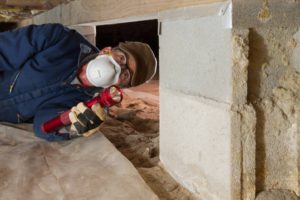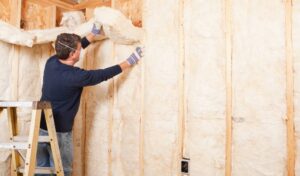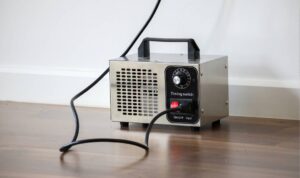Definition of mold remediation
Mold remediation is the process of identifying, testing, containing, removing, and preventing the further growth of mold in a home or business. The first step is to identify the presence of mold, which often involves a thorough inspection of the property. Testing may then be conducted to determine the type and extent of the mold growth.
Once identified, the affected area is contained to prevent the spread of mold spores to other areas of the property. The next step involves the removal of affected materials, such as drywall or carpeting, and the use of air filtration systems to remove any lingering mold spores.
In a comprehensive mold remediation plan, services may also include encapsulating building materials to prevent future mold growth, as well as implementing preventive measures such as improving ventilation and addressing moisture issues.
Overall, mold remediation involves a multi-step process to effectively address and prevent the growth of mold in a home or business.
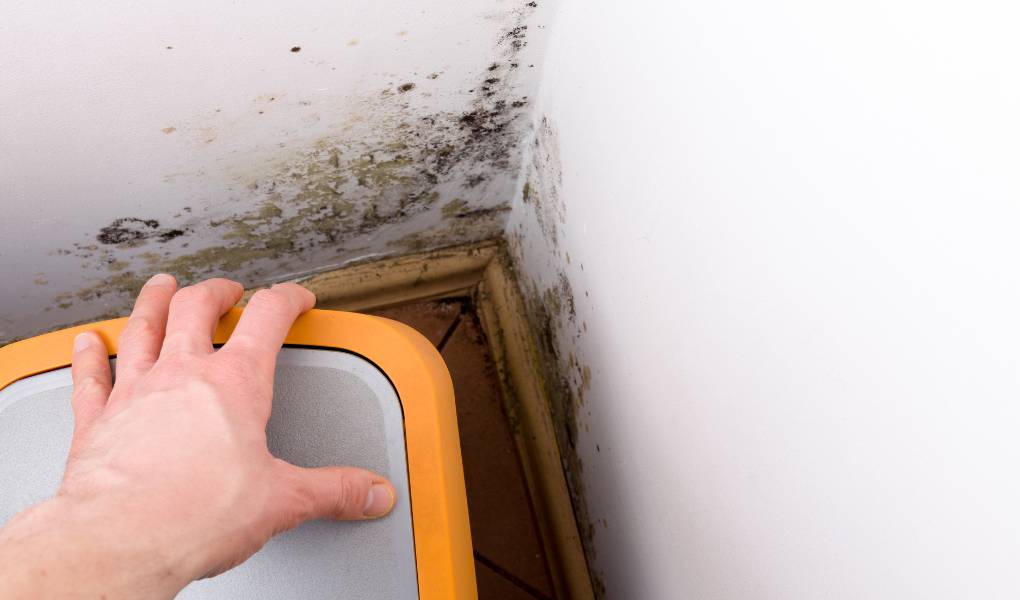
Importance of addressing mold issues promptly
It is crucial to address mold issues promptly in your home to prevent further damage and potential health risks. Mold can spread quickly and cause structural damage if not addressed promptly. This can lead to costly repairs and restoration of your home. Furthermore, exposure to mold can pose serious health risks, including respiratory issues and allergies. Therefore, it is important to take immediate action to remove mold and prevent it from spreading.
Addressing mold issues promptly can also save time and money in the long run. By taking quick action, you can avoid the need for extensive repairs and medical expenses associated with health issues caused by mold exposure. It is essential to address mold issues as soon as they are noticed to protect your home and the health of your family. Don’t hesitate to seek professional help if the mold problem is extensive. By taking these steps promptly, you can mitigate the potential damage and health risks associated with mold, ultimately saving both time and money.
Understanding Mold Growth and Damage
Mold is a type of fungus that can grow in warm, damp, and humid conditions. It can be found in various places, such as in the air, on surfaces, and even in food. Mold growth can cause damage to buildings, furniture, and other items, as well as pose health risks to humans. In this section, we will explore the factors that contribute to mold growth, the potential damage it can cause, and how to identify and address mold problems in the home and other environments. By gaining a better understanding of mold growth and damage, we can take the necessary steps to prevent and eradicate mold issues, ensuring a healthier and safer living environment for all.
Causes of mold growth
Mold growth in a house is commonly caused by excess moisture from various sources such as leaking pipes, roofs, or flooding. When these factors are not addressed promptly, they create damp, dark, and moist environments that provide an ideal breeding ground for mold. Leaking pipes and roofs can result in hidden pockets of moisture within walls, ceilings, and floors, allowing mold to flourish undetected. Flooding can also result in prolonged periods of excess moisture, promoting mold growth in areas that have been affected.
Additionally, dark and poorly ventilated areas such as basements, crawl spaces, and attics are susceptible to mold growth due to their naturally damp and enclosed nature. These areas are often prone to higher levels of moisture and humidity, making them prime locations for mold to thrive.
Common areas where mold commonly grows in a home include bathrooms, kitchens, basements, attics, and areas affected by flooding or water damage. It is important to address any sources of excess moisture and maintain proper ventilation to prevent mold growth in these areas. Regular inspections and maintenance of plumbing, roofing, and drainage systems can help mitigate the risk of mold growth in a house.
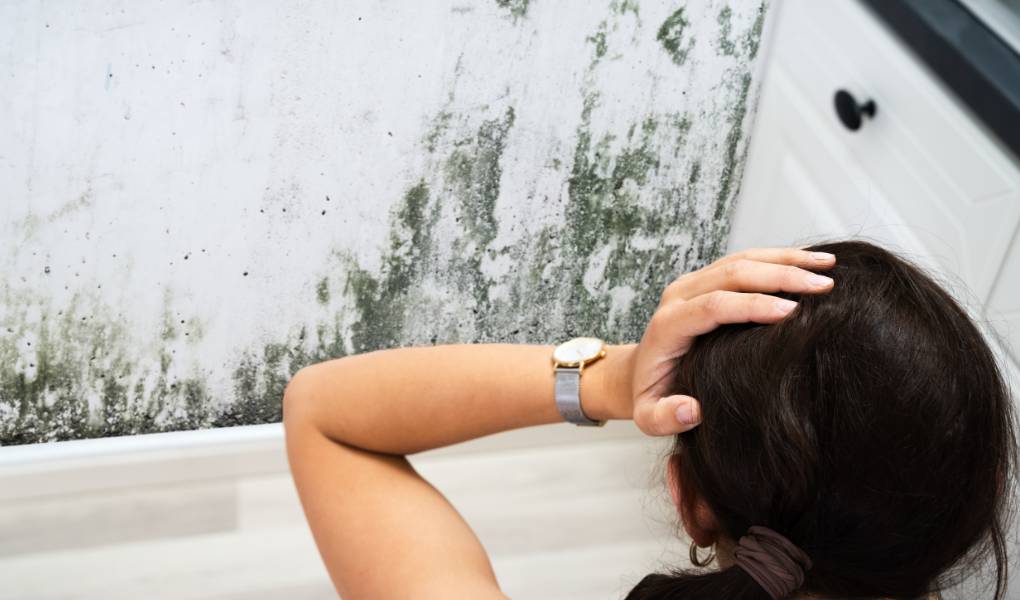
Water leaks and moisture accumulation
Signs of water leaks and moisture accumulation in your home can include musty odors, visible water stains, peeling paint or wallpaper, and sagging ceilings or floors. If you notice any of these signs, it may indicate a water leak or excessive moisture in your home.
To identify potential sources of water leaks, you should inspect your roof for any damaged or missing shingles, check for leaking pipes or fixtures, inspect appliances for leaks or condensation, and monitor your basement for signs of flooding. Identifying and addressing these potential sources of water leaks can help prevent further moisture accumulation in your home.
Common areas where moisture tends to accumulate include bathrooms, kitchens, and basements. These areas are prone to water leaks from plumbing fixtures, appliances, and potential basement flooding, making them prime spots for moisture buildup.
By staying vigilant for signs of water leaks and addressing potential sources of moisture accumulation, you can help prevent damage to your home and maintain a healthy living environment for you and your family.
Poor ventilation and high humidity levels
Poor ventilation and high humidity levels can create a myriad of problems in indoor spaces. From musty odors and mold growth to discomfort and potential health issues, the impact of inadequate air circulation and excessive moisture can be significant. In this article, we will explore the effects of poor ventilation and high humidity levels on indoor environments and discuss practical solutions to improve air quality and control moisture levels. By understanding the consequences of these common issues and implementing effective strategies, individuals can create healthier and more comfortable living and working spaces.
Types of mold
- Black mold (Stachybotrys chartarum): This type of mold is typically greenish-black in color and has a musty odor. It is often found in areas with water damage and high humidity. Black mold can produce mycotoxins, which can lead to respiratory issues, sinus infections, and other health problems.
- Alternaria: This type of mold is commonly found in damp areas like bathrooms and kitchens. It is typically velvet-textured with brown or greenish-black spores. Exposure to Alternaria can trigger allergies and asthma symptoms in sensitive individuals.
- Aspergillus: This type of mold is often found in indoor and outdoor environments. It can vary in color from gray to green and can produce mycotoxins. Exposure to Aspergillus can cause respiratory problems and allergic reactions.
- Chaetomium: This mold is usually found in water-damaged buildings and has a musty odor. It can produce toxins that can cause various health issues, including skin and respiratory problems.
- Cladosporium: This type of mold can be olive-green or brown in color and is commonly found in damp areas. Exposure to Cladosporium can cause respiratory problems and allergic reactions.
- Fusarium: This mold can grow in water-damaged areas and produce toxins. It can cause various health problems, including respiratory infections and skin irritation.
- Green mold: This type of mold can refer to various species, including Penicillium and Aspergillus. It typically appears greenish in color and can cause respiratory issues and allergic reactions.
- Serpula lacrymans: This is commonly known as “dry rot” and can cause structural damage to wood. Prolonged exposure to this mold can cause respiratory problems and allergies.
- White mold: This type of mold can refer to several different species, including Sclerotinia and Sclerotium. It is typically white in color and can cause respiratory problems and allergic reactions in sensitive individuals.

Common types found in homes (black mold, green mold, etc.)
Common types of mold found in homes include black mold, green mold, Alternaria, Aspergillus, and Cladosporium.
- Black mold, also known as Stachybotrys chartarum, is a slimy, greenish-black mold that can grow in damp, humid, and poorly-ventilated areas. Exposure to black mold can cause respiratory issues, allergic reactions, and other health problems.
- Green mold, typically Penicillium, appears as a fluffy, greenish mold commonly found on spoiled food, wet building materials, and in air conditioning systems. It can cause allergic reactions, respiratory issues, and inflammation in the lungs.
- Alternaria mold is a common outdoor mold that can also grow indoors in damp spaces. It appears as a dark green or black fungus and can cause allergic reactions and asthma symptoms in sensitive individuals.
- Aspergillus mold can appear in various colors, including green, white, gray, and yellow. Exposure to Aspergillus mold can cause allergic reactions, respiratory infections, and more severe health complications in individuals with weakened immune systems.
- Cladosporium mold is a black or green mold commonly found on plants, soil, and rotting plant material. It can cause allergic reactions, asthma symptoms, and respiratory issues.
Health risks associated with certain types of mold
Mold is a common problem in many households and can lead to various health risks if left unaddressed. Certain types of mold, such as black mold, can pose serious health threats to individuals, including respiratory issues, allergic reactions, and even more severe conditions in some cases. Understanding the health risks associated with specific types of mold is crucial for taking the necessary precautions and ensuring a safe and healthy environment for oneself and their family. In the following sections, we will delve into the specific health risks associated with certain types of mold and explore the potential implications for individuals who are exposed to them.
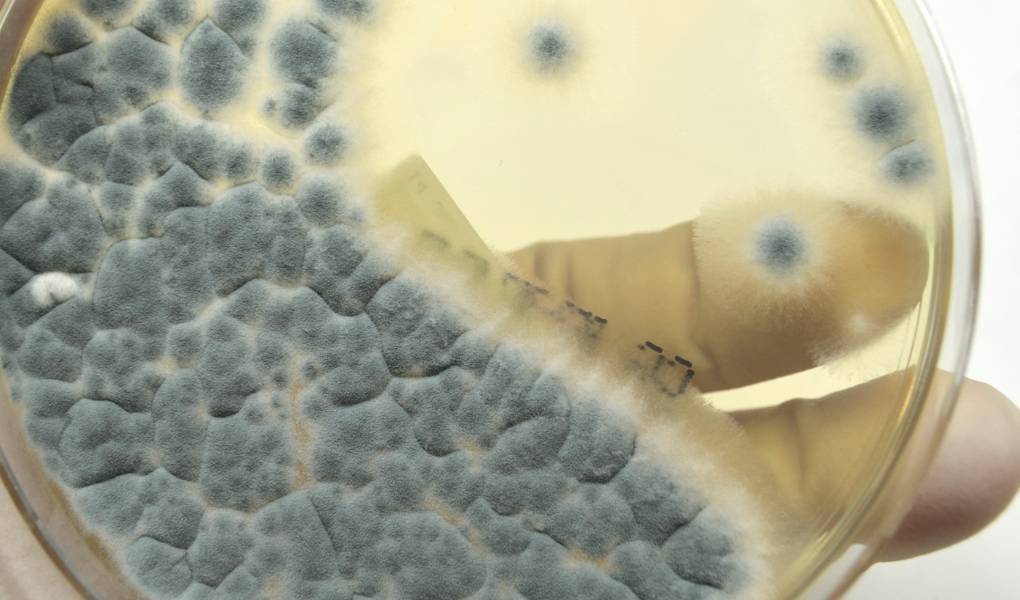
Mold damage in homes
Identifying and addressing mold damage in homes is crucial for maintaining a healthy living environment. Look for signs of excess moisture, such as leaks or flooding, as these are prime conditions for mold growth. Regularly inspect dark, damp areas in the house, such as basements, bathrooms, and under sinks ,air ducts, where mold is likely to thrive.
If mold is discovered, it’s important to clean it promptly and thoroughly to prevent further growth and potential health risks. Use a solution of water and detergent to scrub the mold off hard surfaces, and ensure that the area is completely dry after cleaning to prevent mold from returning. In some cases, it may be necessary to consult a professional for more extensive mold removal.
By staying vigilant for signs of excess moisture and regularly inspecting areas prone to mold growth, homeowners can effectively address and prevent mold damage in their homes, creating a safer and healthier living environment for themselves and their families.
Structural damage to walls, ceilings, and floors
The mold growth in my home has caused significant structural damage to the walls, ceilings, and floors. There are visible signs of damage, including discoloration, warping, and weakening of the structural components. The walls have become discolored and show signs of deterioration, while the ceilings have developed sagging and water stains. The floors have warped and have become weak in certain areas.
The integrity and safety of these areas in my home have been compromised as a result of the mold growth. The weakened structural components pose a risk to the safety of the household, and the potential for collapse or further damage is a concern.
The mold has spread to multiple areas, causing damage throughout the home. The potential hazards associated with the structural damage include the risk of collapse or further deterioration of the affected areas. It is crucial to address the mold growth and its impact on the structural integrity of the home as soon as possible to prevent further damage and ensure the safety of the residents.
Health risks for occupants (allergies, respiratory issues)
Occupants of properties with mold issues face potential health risks, particularly regarding allergies and respiratory problems. Mold exposure can trigger allergic reactions, including sneezing, runny or congested nose, and skin rashes. Additionally, individuals with mold allergies may experience wheezing, coughing, and difficulty breathing. Prolonged exposure to mold spores can also lead to respiratory issues, such as asthma exacerbation and increased susceptibility to respiratory infections.
Symptoms of mold exposure may vary but commonly include congestion, coughing, wheezing, itchy or watery eyes, skin irritation, and shortness of breath. It is crucial to be aware of your surroundings and recognize the signs of mold exposure to protect your family’s health. If you suspect mold growth in your home, it is important to address the issue promptly to minimize health risks. Furthermore, ensuring proper ventilation and controlling moisture levels can help prevent mold growth and reduce the potential health impacts of mold exposure. Prioritizing indoor air quality can significantly contribute to the overall well-being of occupants.
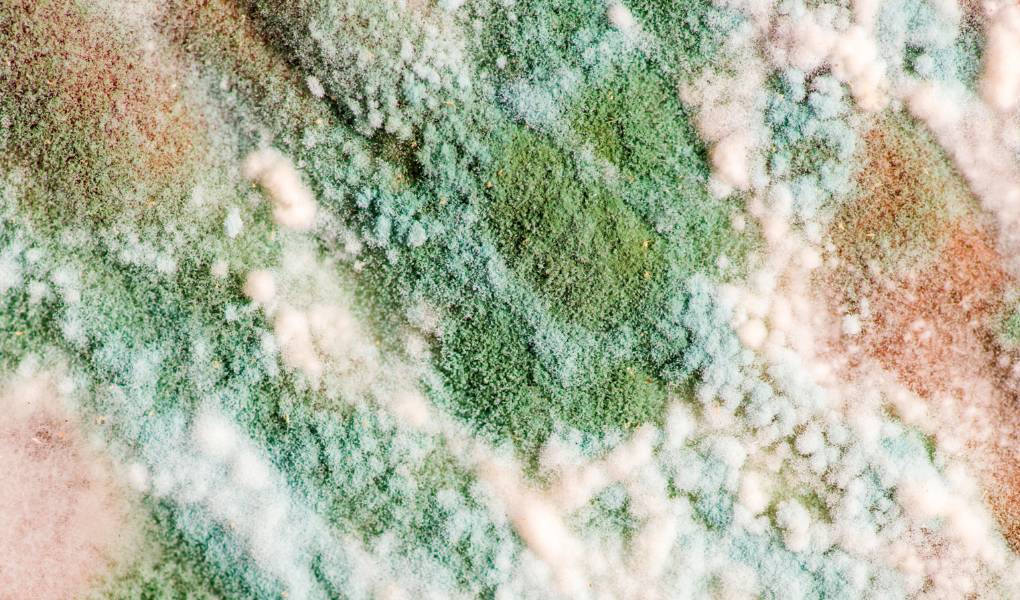
Insurance Coverage for Mold Remediation
Mold remediation is a crucial aspect of home maintenance, as mold can cause serious health issues and damage to the property. In the event of a mold infestation, the cost of professional mold remediation can be high. It is important to understand whether your insurance company policy covers mold remediation, as this can significantly impact the financial burden of addressing the issue. Here, we will explore the ins and outs of insurance coverage for mold remediation by the insurance company, including what is typically covered and what factors may influence coverage. We will also discuss steps homeowners can take to ensure they are adequately protected in the event of a mold-related issue. Understanding your insurance coverage for mold remediation is essential for proactive and effective home management.
Homeowners insurance policies
Homeowners insurance policies come in different types, such as HO-1, HO-2, HO-3, and HO-5, each offering varying levels of coverage for the structure of the home and personal belongings. Deductibles, or the amount you pay out of pocket before insurance kicks in, can range from a few hundred to a few thousand dollars. Some common coverage options include liability, personal property, dwelling, and additional living expenses. Many insurance companies offer discounts for bundling, such as combining homeowners and auto insurance. you can always can ask your insurance agent for help.
When it comes to water damage, most policies cover sudden and accidental occurrences, like burst pipes, but may exclude gradual damage or flooding. Mold inspections are typically covered if they result from a covered water damage claim. State-specific regulations may limit the coverage for mold remediation, so it’s important to know your state’s specific laws.
Factors that can affect homeowners insurance costs include the age and location of the home, credit-based insurance scores, and eligibility for discounts based on factors like having a security system or a new roof. Understanding the various coverage options and potential discounts can help homeowners choose the right policy for their needs and budget.
Overview of standard homeowners policy and insurance policies
Most standard homeowners insurance policy and insurance policies cover water damage caused by burst pipes, leaky roofs, or other unexpected incidents. However, they typically do not cover flooding caused by natural disasters, such as heavy rainfall or hurricanes. As for mold inspection and testing, some policies may cover it if the mold is a result of a covered water damage claim. It’s important to review your specific policy to understand what it includes in terms of mold coverage.
To save on homeowners insurance, consider increasing your deductibles or bundling policies for discounts. Bundling your homeowners insurance with your auto or life insurance can often result in savings. Additionally, maintaining good credit can also help reduce insurance costs as insurers may use credit-based insurance scores to determine premiums.
In North Carolina, there is a $5,000 cap on “mold remediation” coverage. This means that policies in the state may only cover up to $5,000 for mold remediation costs. To ensure adequate coverage for mold remediation, it may be worth considering purchasing additional coverage beyond the cap.
Overall, understanding your homeowners insurance policy and exploring different ways to save on premiums can help protect your home and finances.
FAQ’S:
Who is responsible for paying for mold remediation in rental properties?
In rental properties, the responsibility for paying for mold remediation can vary depending on the circumstances. In general, it is the landlord’s responsibility to address mold issues that are caused by underlying structural problems or water damage. Landlords have a legal duty to provide tenants with a safe and habitable living environment.
Are there any circumstances where the tenant may be responsible for paying for mold remediation?
In certain circumstances, tenants may be responsible for paying for mold remediation. This can occur when the mold is a result of the tenant’s actions or negligence. For example, if the tenant fails to report a water leak that eventually leads to mold growth, they may be held responsible for the cost of remediation.
In a condominium or homeowners association, who is usually responsible for paying for mold remediation?
Responsibility for paying for mold remediation in condominiums or homeowners associations can vary depending on the specific circumstances and governing documents. In some cases, the association may be responsible for addressing mold issues that are caused by common areas or shared structures. This can include remediation costs associated with water leaks or other maintenance issues.
Is mold remediation covered by warranty or guarantees from the construction company?
Mold remediation is typically not covered by warranty or guarantees from the construction company. Most warranties and guarantees provided by construction companies are limited to structural defects or issues related to the initial construction of the property. Mold growth is often considered a result of moisture or water damage, which is not covered under these warranties.
How can I determine the actual cost of mold remediation before starting the process?
Determining the actual cost of mold remediation before starting the process can be a complex task. It is important to note that the cost of mold remediation can vary depending on several factors, including the size and extent of the mold growth, the location of the mold, and the underlying cause of the moisture or water damage.
To get an accurate estimate of the cost, it is recommended to contact professional company.
Need an advice? Call Attic Crew today for the most professional mold inspection service.

